Donning a dark blue and light pink hanbok (Korean traditional costume), our guide Jae greeted us at the gate to the Secret Garden at Seoul’s Changdeokgung Palace. Together with around 40-50 other visitors, most of them wearing thick jackets with their hands tucked firmly in their pockets, we were about to enter a section of the early 15th-century palace which can only be accessed on a guided tour.
“Good morning! How are you?” our fresh-looking guide welcomed us; his hair was combed so neatly it could possibly not move even a millimeter during a typhoon, his face was proof of what Korean skincare products can do, and his outfit was so spotless it provided us with a glimpse of how magnificent the costumes of the past kings, queens, princes and princesses must have looked like.
“Very cold,” we answered in unison with a hint of frustration at the stubbornly low temperatures despite being in early April – it was 4 degrees Celsius that morning even with the arrival of the spring sun.
“Yes, it is unseasonably cold. But starting from tomorrow the weather should get warmer and warmer,” he reassured us. Unfortunately that was my last day in Seoul on a very short trip which was made even shorter due to a little weather drama at the beginning of the trip.
A few hours earlier, James and I had arrived at Donhwamun, the main gate of Changdeokgung palace complex, together with a few other visitors. Seoul’s morning sun that day was a nice relief from days of clouds that given the South Korean capital a rather gloomy appearance, and as soon as the entrance was open we headed straight to Changdeokgung’s Injeongjeon, the compound’s opulent throne hall. Given the existence of a grand palace on the scale of Gyeongbokgung, one might wonder, why would Seoul need another one? In fact, the South Korean capital has no less than five palace compounds that hark back to an age when the Korean peninsula was still led by dynastic rulers.
To understand the origins of Changdeokgung, we have to go back in time to a period known in Korean history as the strife of princes. The overthrowing of the Goryeo dynasty in the late 14th century involved several high-ranking figures, including Yi Seong-gye (who would later be known as King Taejo, the first ruler of a new dynasty called Joseon) and Yi Bang-won (King Taejo’s fifth son who helped him assassinate officials loyal to the Goryeo dynasty). As history goes (and keeps repeating itself in many parts of the world), the prince who expected the king to appoint him as his successor was disappointed by the king’s decision to choose his eighth son instead. Angered by his father’s resolution and blinded by his own ambition, Yi Bang-won murdered the crown prince, another half-brother, and the king’s prime minister.
Devastated by the blood spilled within Gyeongbokgung’s compound, King Taejo decided to abdicate and appointed his second son Yi Bang-gwa as his successor. The new ruler, called King Jeongjong, moved the capital of his kingdom from Hanyang (modern-day Seoul) to Kaesong, the former Goryeo seat of government (and today a North Korean city near the border with South Korea), far enough from the reach of power-hungry Yi Bang-won. However, nothing seemed to be able to stop the latter from gaining more influence, and after another episode of strife involving princes of the Joseon dynasty, King Jeongjong abdicated after only two years in power. Yi Bang-won eventually ascended the throne and became King Taejong, Joseon’s third ruler.
The new king brought drastic changes in many aspects of state affairs, from the dissolution of an assembly of court ministers to strengthen the king’s power, to the promotion of Confucianism as the state ideology over Buddhism which had been adopted by the Goryeo dynasty. He also moved the capital of his realm back to Hanyang, where a new royal residence and office called Changdeokgung was commissioned five years after he assumed control of the kingdom. It took seven years to finish the palace and interestingly, in spite of the bloody path he went through to become a king, Taejong wanted his new abode to be in harmony with its surrounding environment, as opposed to Gyeongbokgung’s imposing nature.
Despite having been destroyed several times throughout its history, Changdeokgung has always been faithfully reconstructed according to its original design. It was the favorite palace of many Joseon kings, largely because of its vast garden at the back of the core section of the compound where kings and royal family members relaxed and had their recreation. Now called the Secret Garden, it was where we met Jae for that cold but memorable walking tour. Our knowledgeable guide walked us through beautiful ponds and pavilions set against the picturesque setting of the verdant hill along a meandering pathway that sometimes led to steep steps which proved to be arduous for some of us – past kings must have had less sedentary lifestyles.
Unfortunately the sun was hiding behind the clouds once again despite the promising start of the day. An image in the official brochure I was holding showed Buyongji Pond and Juhamnu Pavilion surrounded with beautiful autumn foliage, not exactly how both appeared to my eyes that day but they were still pretty nonetheless. Thanks to its state of preservation compared to other royal palaces of the Joseon dynasty, Changdeokgung was inscribed on the UNESCO World Heritage list in 1997 – two years after South Korea’s first three sites made it into the prestigious list – a status that has turned it into one of the most popular heritage buildings in Seoul.
However, one question remains unanswered: when will the people across the border be able to visit these sites just like everyone else across the globe? And vice versa for the South Koreans to see places in the north that played an important role in the history of the peninsula, like Kaesong. Only time will tell.

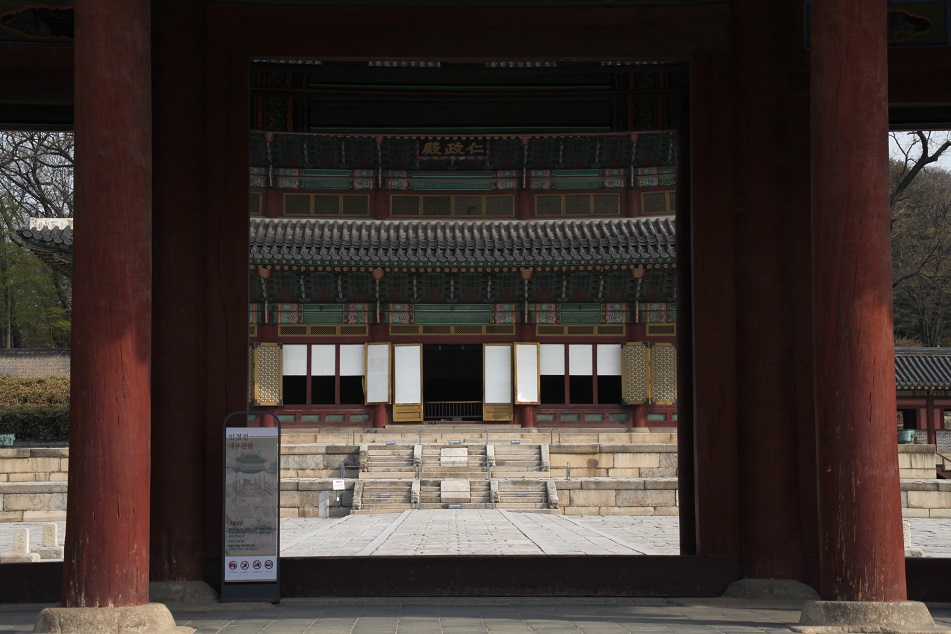






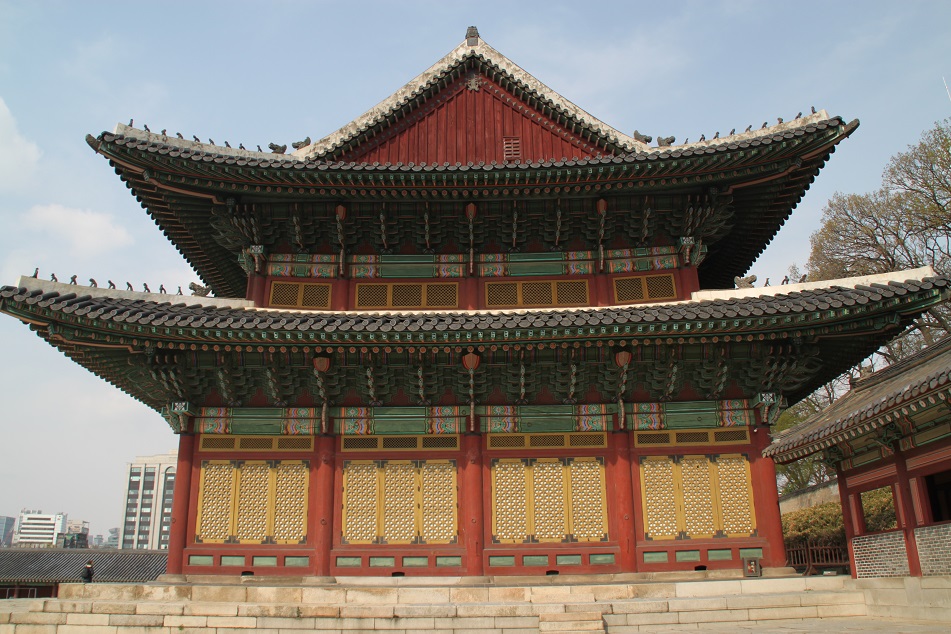


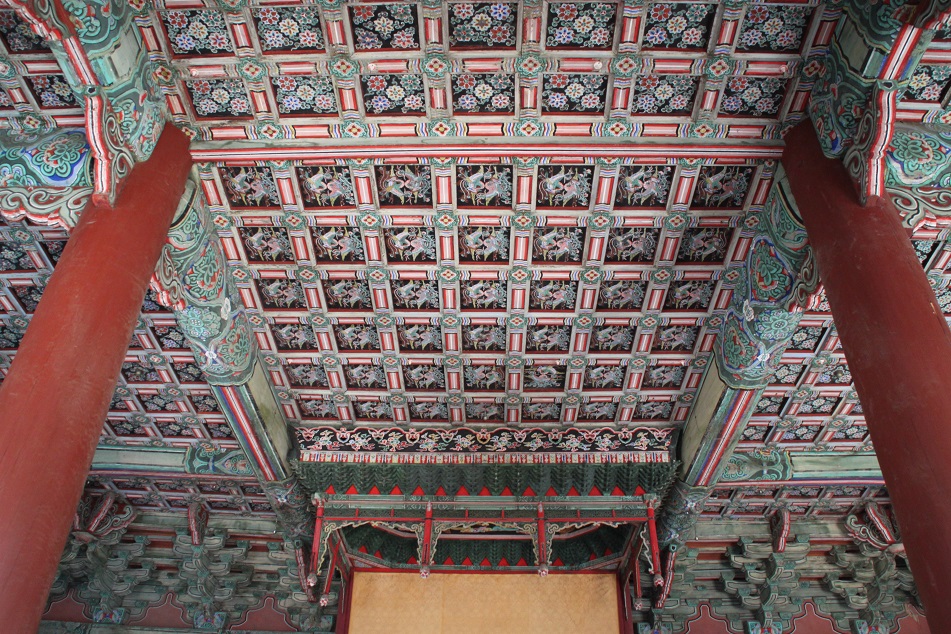

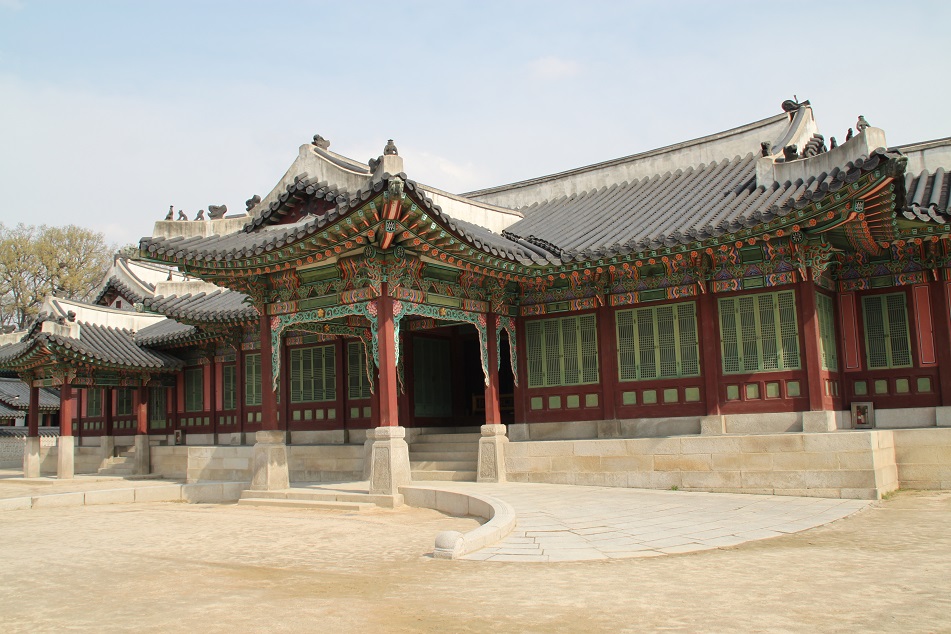


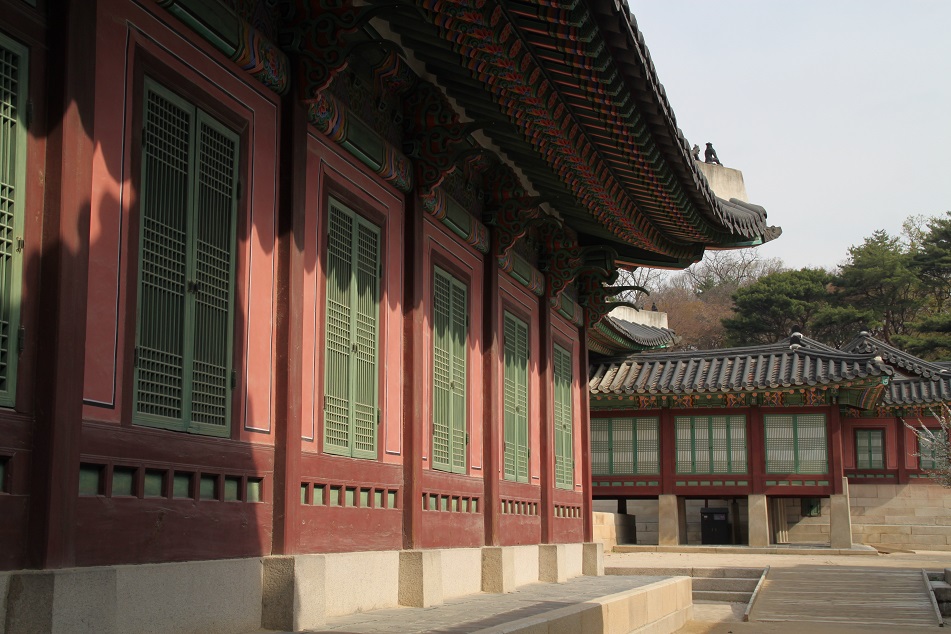
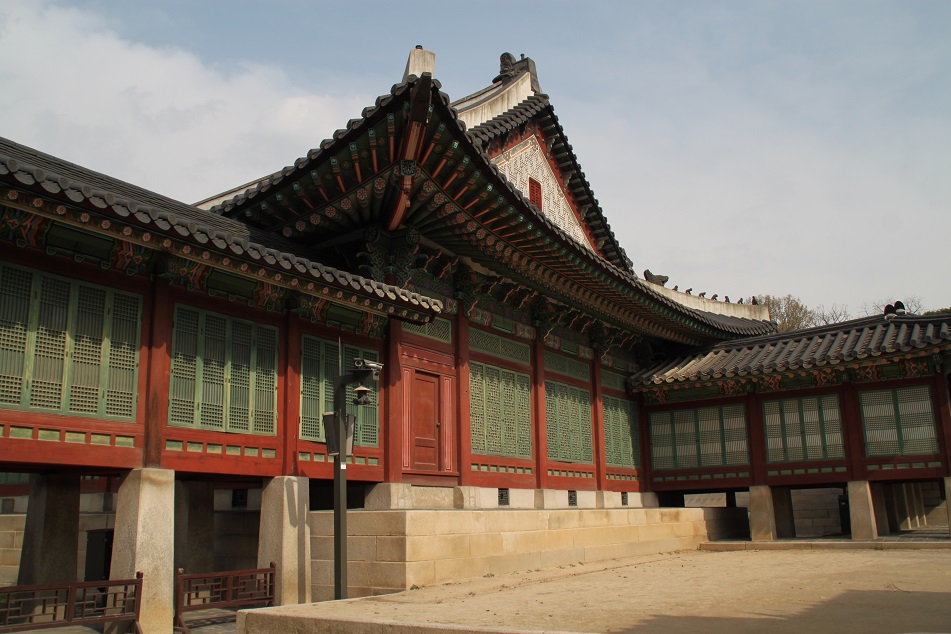
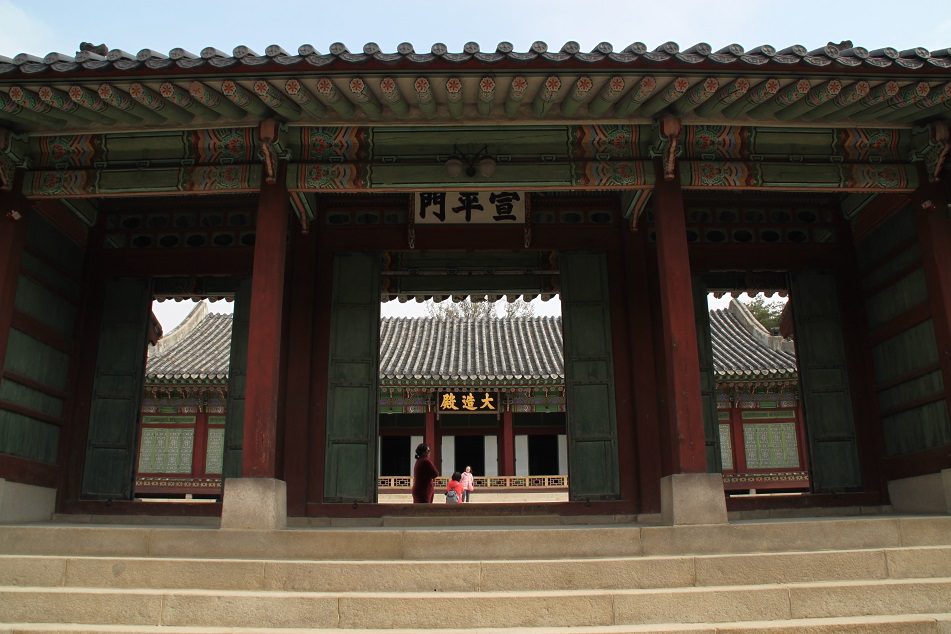






Pingback: Changdeokgung: The Finest of the Five — What an Amazing World! – „Ingerii sunt spirite inaripate, prietene cu spiritul tau inaripat.“
Recent history is filled with stories about divided cities and countries. Berlin, Germany, Vietnam. When the Berlin wall was built we were told the wall would last for ever. After 25 years the wall came tumbling down. So it will be with Korea also. The signs for this development are already surfacing. Great post, Bama!
LikeLike
I hope the recent good momentum will indeed bring peace to the Korean peninsula. Both sides have taken dramatic steps to reduce tensions in the last few months, and yesterday I read that they agreed to remove land mines and dismantle their military personnel on the border. Total unification might still be a long way ahead, but the prospect of peace is enough reason to be optimistic. Thanks Peter!
LikeLiked by 1 person
I want to make sure that you know how much I appreciate seeing places that I would never get to see if it were not for your blog. This is really important. I wish I could travel to these places, but cannot. Your sharing them is a gift. I look forward to every post. Bless you.
LikeLike
Thank you so much. It really is my pleasure to share with my readers the stories and photos of the places I visited, just like how I enjoy other bloggers sharing theirs.
LikeLiked by 1 person
Fascinating post Bama. As it has ever been the world over – there always seem to be power-hungry men who will stop at nothing to get to the top. The whole place is quite lovely, and some of the details show the beauty of the place. Wonderful photos. I especially like the one labelled “Huijeongdang from a different perspective”. I’m wondering if you do any post editing on your photos. A little more contrast would give them greater depth. The flower I believe is a magnolia.
Alison
LikeLike
Thanks Alison. Unfortunately this kind of people are among us, slowly climbing their ways to the top. Some will succeed, some won’t, depending on whether the society allows them to do so or not. Speaking of post editing, I have always wanted to do that, but mostly what I do is brightening images that are darker than how I remember the places/objects to have looked like.
LikeLiked by 1 person
What amazed me about Changdeokgung wasn’t just the glorious details and vivid colors adorning each hall, but also that it somehow survived the Japanese occupation and the Korean War largely intact – even though Seoul changed hands four times during the course of the fighting. I’m glad there was a brief spell of bright weather the morning we went to the palace. The Secret Garden too was a highlight, and Jae did a fantastic job as a guide.
LikeLike
Probably the fact that it is not as imposing as Gyeongbokgung helped. I know the other three palaces are smaller than Changdeokgung, but I wouldn’t mind visiting them one day to add more perspective to my understanding of ancient Korea. Too bad the clouds returned just before the Secret Garden tour started, although in hindsight it was probably better that way since the walk was quite physically demanding for some people in our group.
LikeLiked by 1 person
Nice photos. I had extreme cold but bright sunshine during my days exploring these palaces and the garden. Your photos brought back wonderful memories.
LikeLike
Thank you. I guess to really avoid the cold weather we should go to Korea in summer, which happens to be the time of the year when precipitation is the highest. Glad you enjoyed this post.
LikeLike
I was lucky to have stayed a stone’s throw from Changdeokgung as I had been told that despite its not being the biggest palace, it was the most beautiful. My weather was the opposite of yours – steaming hot and sunny – but I think Changdeokgung would look elegant no matter the lighting or climate. I laughed at your comment about your guide’s perfect hair and skin, and I wish I had spent a little more time in Seoul pursuing the whole K-Beauty thing myself!
LikeLike
In terms of photography, I prefer sunny days. However, I remember not getting too exhausted walking around in Seoul thanks to the chilly weather. I wonder how much more beautiful it would look like around this time of the year. Speaking of the beauty industry in South Korea, it was just mind-boggling to see how it has indeed become an important part of their life — based on my observation a lot of people’s faces looked rather ‘sparkling’.
LikeLiked by 1 person
Absolutely stunning architecture and photos!
LikeLike
Thanks Nicole. Changdeokgung is such a beautiful palace, a fine example of Korean architectural masterpiece.
LikeLike
Bama I laughed out loud at your description of the guide’s hair not moving in a typhoon. I’m thinking 4C would be very chilly compared to what you are accustomed to. Although currently it is what we have as a daytime high with a foot of snow on the ground! The architecture is stunning and as always your creative angles and perspectives intrigue me. Beautiful captures.
LikeLike
Sometimes I wear hair gel to work, but my hair never looks as neat as Jae’s — his was immaculate, hence the thought that it would survive a typhoon. Speaking of the temperature, it was a little too much for this tropical man to handle. I wonder how I would survive Canadian winter! Glad you enjoyed this post, Sue. Thanks for reading.
LikeLiked by 1 person
A piece of history I wasn’t aware of, thank you so much for educating me and us readers.
LikeLike
My pleasure, Cornelia. I also learned a lot prior to the trip and in the process of writing this post.
LikeLiked by 1 person
Wonderful post. I loved the way you connected your tour guide with the past. The architecture is beautiful, vibrant and the pictures do justice to them.
LikeLike
Thanks Hariom! It felt almost natural, really. Although I don’t think in the past the men had the same hairstyle. I loved the vibrant colors of Changdeokgung under the morning sun. The fact that it wasn’t as crowded as Gyeongbokgung made the visit even more enjoyable despite the cold weather.
LikeLiked by 1 person
You raise a great point at the end – when will the Korean people be able move freely on the peninsula. Hopefully change will happen soon but it may not even happen in my lifetime.
On a lighter note, I am always amazed when I stop in the airports in Tokyo or Seoul at how perfect the uniforms are, and how clean and orderly the airport is in general. Your guide looks like a perfect example of that.
LikeLike
Well, just like your friends, you may have nine lives. So I think change will indeed happen in your lifetime. The Japanese, especially those working in the service industry, are known for their immaculate appearance, and the Koreans are not too far behind. This makes me think of one of your old posts about identifying where a tourist is from judging from the way he/she dresses.
LikeLike
I thoroughly enjoyed that little pond in Changdeokgung and I have to say the chilly weather which I also experienced somehow added to the austerity of the palace grounds. Everything seemed preserved in an eerie way when I was exploring. I’d like to return as well, for the food and to find out more about that K-beauty scene.
LikeLike
I remember your post on Seoul and how you mentioned about the cold temperatures. When I was exploring Changdeokgung, some parts of the palace compound were in fact very quiet, an important factor to why I enjoyed it more than Gyeongbokgung. However, I’m also curious about the other palaces — maybe one day when I return to the South Korean capital.
LikeLiked by 1 person
What a beautiful architecture Changdeokgung has, I specifically like the detail of the temple roofs and ceilings as displayed on your pictures.
LikeLike
The roofs and ceilings were really astonishing. Of all the places I’ve been to, only a few could match the splendor of Korean craftsmanship and artistry.
LikeLiked by 1 person